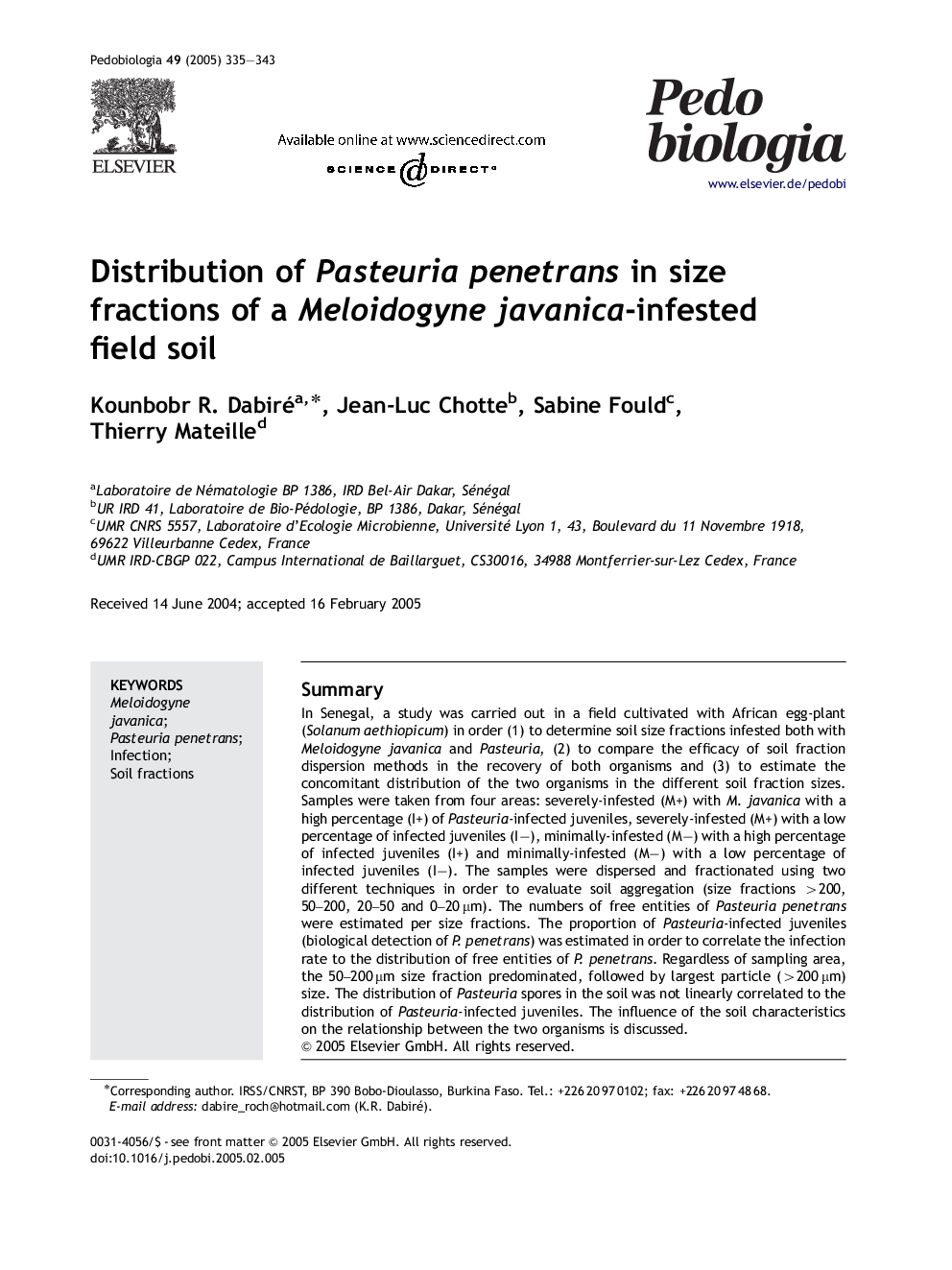| Article ID | Journal | Published Year | Pages | File Type |
|---|---|---|---|---|
| 10878702 | Pedobiologia | 2005 | 9 Pages |
Abstract
In Senegal, a study was carried out in a field cultivated with African egg-plant (Solanum aethiopicum) in order (1) to determine soil size fractions infested both with Meloidogyne javanica and Pasteuria, (2) to compare the efficacy of soil fraction dispersion methods in the recovery of both organisms and (3) to estimate the concomitant distribution of the two organisms in the different soil fraction sizes. Samples were taken from four areas: severely-infested (M+) with M. javanica with a high percentage (I+) of Pasteuria-infected juveniles, severely-infested (M+) with a low percentage of infected juveniles (Iâ), minimally-infested (Mâ) with a high percentage of infected juveniles (I+) and minimally-infested (Mâ) with a low percentage of infected juveniles (Iâ). The samples were dispersed and fractionated using two different techniques in order to evaluate soil aggregation (size fractions >200, 50-200, 20-50 and 0-20 μm). The numbers of free entities of Pasteuria penetrans were estimated per size fractions. The proportion of Pasteuria-infected juveniles (biological detection of P. penetrans) was estimated in order to correlate the infection rate to the distribution of free entities of P. penetrans. Regardless of sampling area, the 50-200 μm size fraction predominated, followed by largest particle (>200 μm) size. The distribution of Pasteuria spores in the soil was not linearly correlated to the distribution of Pasteuria-infected juveniles. The influence of the soil characteristics on the relationship between the two organisms is discussed.
Related Topics
Life Sciences
Agricultural and Biological Sciences
Animal Science and Zoology
Authors
Kounbobr R. Dabiré, Jean-Luc Chotte, Sabine Fould, Thierry Mateille,
